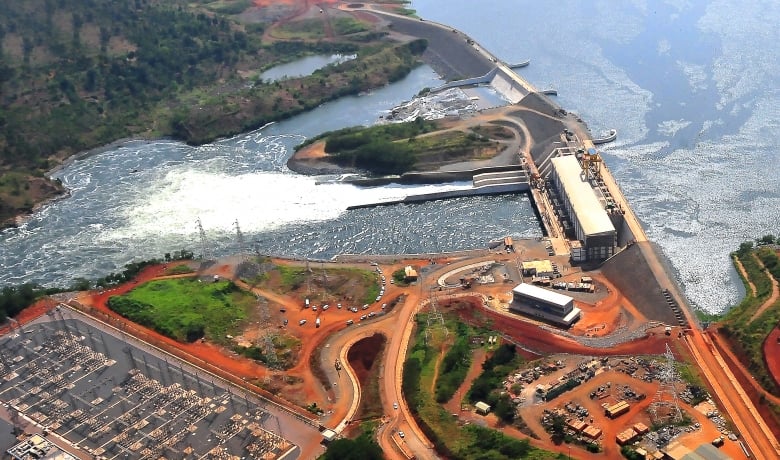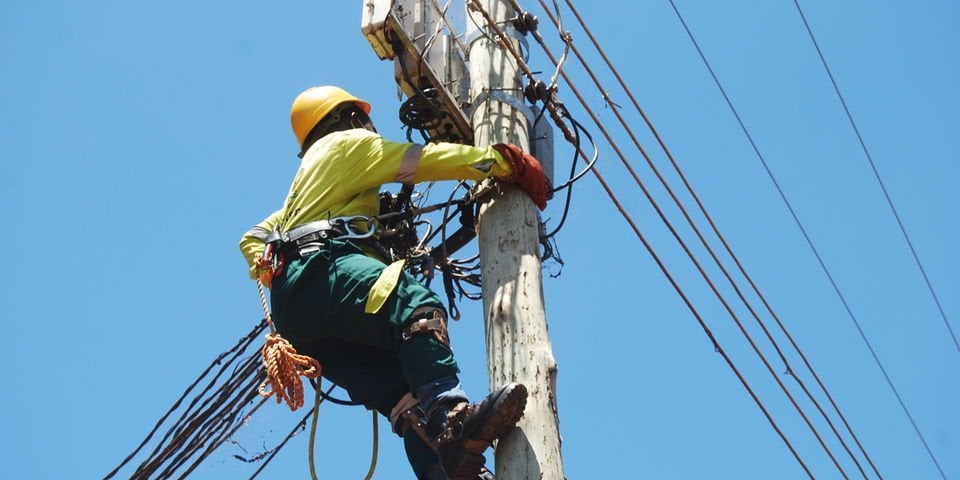Prime
Uganda prepares to export its electricity

Energy minister Ruth Nankabirwa (centre) during the commissioning of the Namanve Industrial Park substation. PHOTO/TOBBIAS JOLLY OWINY
What you need to know:
- The move aims to enable utilisation of excess capacity, boost economy, and foster regional energy cooperation.
The Uganda government is leading efforts to breathe life into the Eastern Africa Power Pool (EAPP) as it looks to address an age-old problem around the imbalance of energy production in relation to energy consumption.
Formed 18 years ago, the EAPP has struggled to fulfil its core mandate of facilitating trade of electric power among member countries under its jurisdiction.
Just a few months ago, Energy minister Ruth Nankabirwa described as “a shame” the fact that while Uganda’s “installed capacity stands at 1,378MV … consumption at the peak is only 900MV.”
Ms Nankabirwa added: “We borrow money to put up these infrastructure expecting to get money from electricity sold to pay back. So we will welcome whoever wants to invest in Uganda in value addition from agriculture and across all the other sectors.”
Monitor now understands that efforts are in high gear to give the EAPP a new lease of life. The power pool already has 13 member countries party to its collaborative effort courtesy of an Inter-Governmental Memorandum of Understanding (MoU). Further, 14 utility companies, including Uganda Electricity Transmission Company Limited (UETCL), signed on the dotted line of an inter-utility MoU.
“The market will operate through the merit order practice that the cheapest power plants are dispatched first hence ensuring the most competitive and economic power,” Mr Joshua Karamagi, the UETCL managing director, told Saturday Monitor, adding, “The power pool will also enable member countries to achieve energy security and reliability.”
Two steps forward, one back
Since inheriting a transmission system comprising 1,166km of 132kV and 66kV transmission lines, UETCL has grown the country’s transmission network to include 2,989.2km of high voltage lines. These span 1,008km of 220kV, 1,946km of 132kV and 35km of 66kV transmission lines.
Consequently, the length of the transmission grid has more than doubled over the past 20 years. In fact, the current 25 substations have a transformation capacity of 2829.5MVA. The government envisages boasting up to 5,614.05MW of electricity in a dozen years.
But, as UETCL’s Grid Development Plan 2018-2040 makes clear, peak demand or the time when consumer demand for energy is at its highest has only improved marginally.
In 2017, it was about 562.45MW and 534MW in 2016. As of March 2023, it was at 900MV, prompting Ms Nankabirwa’s tirade. With the much-anticipated Karuma Hydropower Plant now adding an extra 600MW, experts say things could get worse before getting any better as regards to energy consumption.
Domestic consumption has especially been lackadaisical. On July 9, 2021, UETCL powered on the 132kV Opuyo-Moroto line and associated substations that traverse Soroti, Amuria, Katakwi, Napak and Moroto districts. The 132kV transmission line covers 162 km of the double circuit and comes along with a new substation in Moroto Municipality.
Although the intervention pushed the total electricity power supply in the sub-region from less than 20MW to at least 80MW, consumers are few and far between. Only 6,690 clients are currently served under domestic, commercial medium voltage and street lighting tariffs, translating to 1.5 percent of the projected maximal numbers of clients as per the Uganda Electricity Distribution Company Limited (UEDCL).
EAPP magic wand?
Could the EAPP morph into a silver bullet? Mr Karamagi seems to think so, reasoning that up to 65 percent of member countries are interconnected.
“Uganda is already interconnected with Rwanda and Kenya, while Kenya is interconnected with Ethiopia, which is interconnected with Sudan, which is interconnected with Egypt,” he told Monitor, adding, “For the countries which are not yet interconnected, we are holding consultative meetings to ensure that the required infrastructure is put in place.”
The EAPP’s electricity trading activities are expected to commence properly at the backend of 2024. The power pool comprises Burundi, Djibouti, the Democratic Republic of Congo (DRC), Rwanda, Egypt, Ethiopia, Kenya, Sudan, Tanzania, Uganda, and Libya. South Sudan and Somalia recently joined the collaborative effort, with Eritrea widely expected to follow suit.
“This will answer the common question among Ugandans on where we put all this idle power if the local market cannot consume it even at peak,” the UETCL top boss said of the power pool, adding that the parastatal body is currently undertaking “feasibility studies for the Uganda-Tanzania, Uganda-South Sudan and Uganda-DRC interconnection projects” since the cause for investment in high-voltage power lines for full interconnection has been made.
Uganda is currently interconnected with Rwanda and Kenya.
Deemed energy
Ms Betty Aol Ochan, a member of the parliamentary Committee on Energy and Natural Resources, says the power pool will unburden the government of paying astronomical amounts for deemed energy. This is the amount of energy that was not delivered to the buyer by the seller.
A sizeable degree of the thousands of megawatts that ends up on Uganda’s grid ends up unconsumed. The unconsumed energy has resulted in the government paying huge amounts of money to concessionaires of the generation plants in the form of deemed energy.

A power technician fixes a transmission line. PHOTO/FILE
Uganda has paid at least Shs1.4 trillion to 13 private power generation firms for such unutilised electricity across the past 17 years. The Auditor General’s report for the Financial Year 2020/2021, for instance, indicated that deemed energy costs totalled Shs87.7 billion.
“The issue of deemed energy has been a big problem and if an opportunity to trade the surplus outcomes like this, we shouldn’t even waste time to take it up because that excess will now go to the pool and be sold off to countries that require more,” Ms Aol says.
Ms Aol also tells Saturday Monitor that the House committee on which she is a member, recently discovered—to its dismay—that “not all the units [at Isimba Hydropower Plant] were being run since the demand [for power generated] was low.”
The Gulu City Woman lawmaker is nevertheless mindful of the fact that the EAPP is not a magic wand.
Observers say caution should indeed be the byword. They point to the fact that while the wheeling agreement signed between Kenya, Uganda and Rwanda for the export of power from Kenya to Rwanda via UETCL’s network lasted until 2019, an additional export above 50MW to Kenya and Tanzania has not been made to date.
This, one observer tells Monitor, is because Uganda currently does not have any new power sale agreements. This is despite the commissioning of various interconnectors with neighbouring countries that potentially increase the export capacity to more than 50MW.
“The wider the market, the better. The pool makes a bigger market to trade energy compared to Uganda alone,” Ms Aol reasons, adding, “But we should not be too careless to dispatch everything to the pool and create a situation of scarcity for ourselves.”
Sharing the load
While Ms Aol worries that the government may fail to prioritise funding to support the initiative, Mr Kabagambe Kaliisa, the presidential advisor on energy, says the pool itself creates an avenue to raise financial resources that are reinvested into the same circle.
“Funding gaps shouldn’t be a point of bother because, if you have a big pool of countries bringing in resources, you can easily diversify since it is easier to pool resources together than when the grid is isolated, backups by other parties quickly come in to fortify the system,” he says.
The former Energy minister permanent secretary also reckons that while pooling together to trade energy is not a new phenomenon, it is a likely game-changer for the electricity sub-sector.
“There is also the issue of grid stability,” he says, adding, “If a country has a serious deficit of energy that can cause the grid to collapse, it can gain stability through the factor of the rest once it is part of the interconnected … this is where Uganda will massively gain from.”
He notes: “Countries don’t grow at the same level. Naturally, one country could be growing slowly and has surplus electricity that the other rapidly growing neighbour could use. They can then quickly transfer the excess to the neighbour.”
The EAPP has so far successfully established a Market Working Group (MWG) to enable it address issues related to the EAPP power market on the one hand and a 10-year strategic plan on the other.
It is hoped that addressing both issues will provide a conceptual design of the power market for the EAPP region, restarting the operation of the “shadow market” later this year as a capacity-building exercise for the Market Committee, among others.
The EAPP has also recently developed the interconnectors and transmission lines, which have enabled member countries to exchange electricity with each other. For example, the Ethiopia-Kenya transmission line, which was completed in 2019, with a 2,000MW capacity, enabling Ethiopia to export excess power to Kenya.




